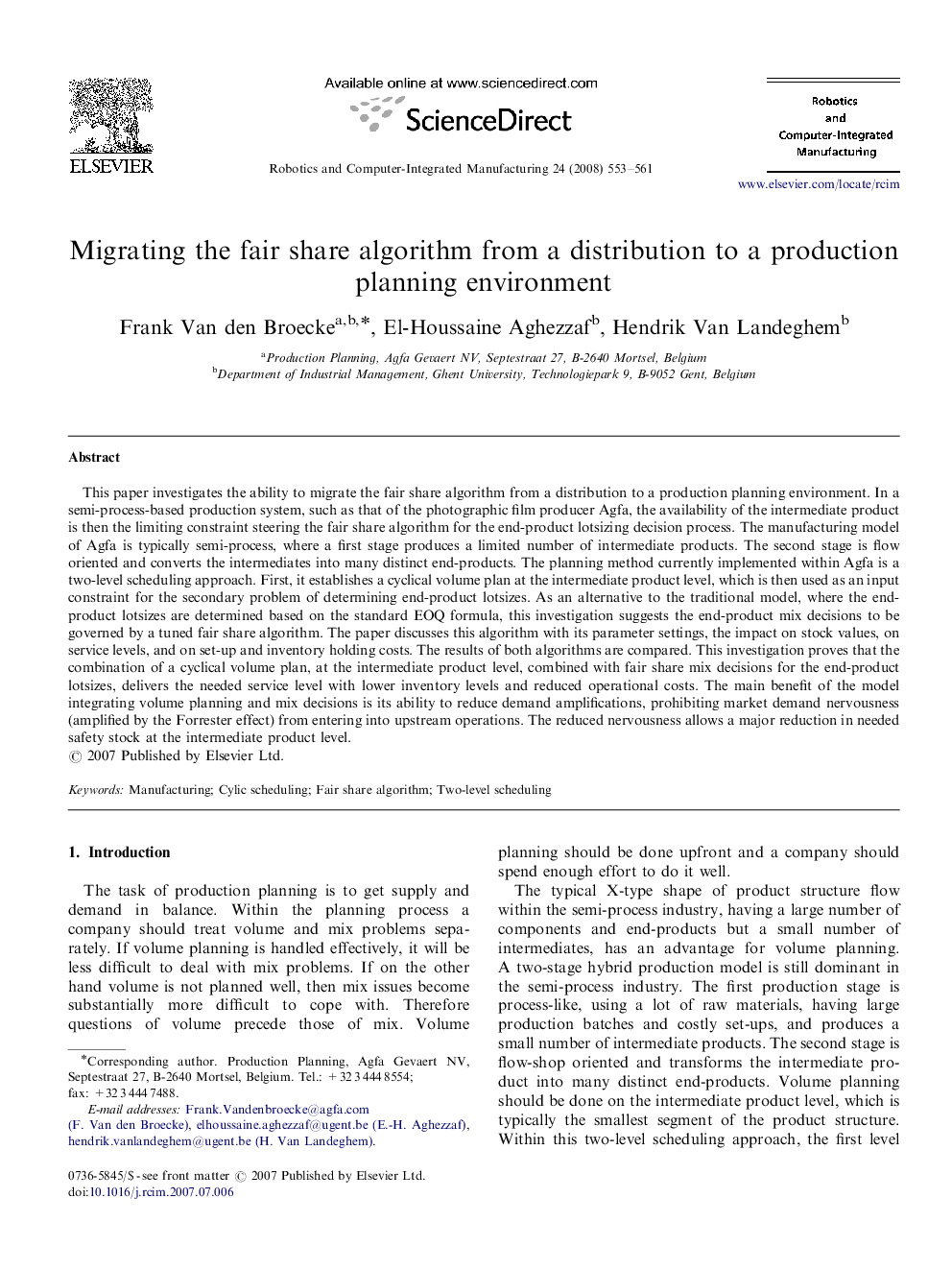| کد مقاله | کد نشریه | سال انتشار | مقاله انگلیسی | نسخه تمام متن |
|---|---|---|---|---|
| 414636 | 680992 | 2008 | 9 صفحه PDF | دانلود رایگان |

This paper investigates the ability to migrate the fair share algorithm from a distribution to a production planning environment. In a semi-process-based production system, such as that of the photographic film producer Agfa, the availability of the intermediate product is then the limiting constraint steering the fair share algorithm for the end-product lotsizing decision process. The manufacturing model of Agfa is typically semi-process, where a first stage produces a limited number of intermediate products. The second stage is flow oriented and converts the intermediates into many distinct end-products. The planning method currently implemented within Agfa is a two-level scheduling approach. First, it establishes a cyclical volume plan at the intermediate product level, which is then used as an input constraint for the secondary problem of determining end-product lotsizes. As an alternative to the traditional model, where the end-product lotsizes are determined based on the standard EOQ formula, this investigation suggests the end-product mix decisions to be governed by a tuned fair share algorithm. The paper discusses this algorithm with its parameter settings, the impact on stock values, on service levels, and on set-up and inventory holding costs. The results of both algorithms are compared. This investigation proves that the combination of a cyclical volume plan, at the intermediate product level, combined with fair share mix decisions for the end-product lotsizes, delivers the needed service level with lower inventory levels and reduced operational costs. The main benefit of the model integrating volume planning and mix decisions is its ability to reduce demand amplifications, prohibiting market demand nervousness (amplified by the Forrester effect) from entering into upstream operations. The reduced nervousness allows a major reduction in needed safety stock at the intermediate product level.
Journal: Robotics and Computer-Integrated Manufacturing - Volume 24, Issue 4, August 2008, Pages 553–561